When discussing diamonds, it’s important to acknowledge the various shapes, qualities, colors, and other characteristics they possess. Among the different diamond shapes, one common concern is how to avoid the presence of a bow-tie effect in oval diamonds.
To address this issue, diamond cutters continually explore different techniques aimed at minimizing the appearance of the bow-tie effect. For instance, adjusting the proportions of an oval diamond by making it broader or deeper can help reduce the visibility of the bow-tie. However, this alteration may require compromising the desired ratio or result in a diamond that appears smaller when viewed from the top.
If the answer provided seems unclear, there’s no need to worry, as we will delve into a comprehensive explanation in the subsequent sections of this article.
Now that we have addressed the initial question, let’s commence from the very beginning and provide a precise clarification of the answer.
Let’s delve into what we have prepared for you!
DESIGN YOUR OWN ENGAGEMENT RING: START WITH A SETTING OR START WITH A DIAMOND. IT’S REALLY UP TO YOU!
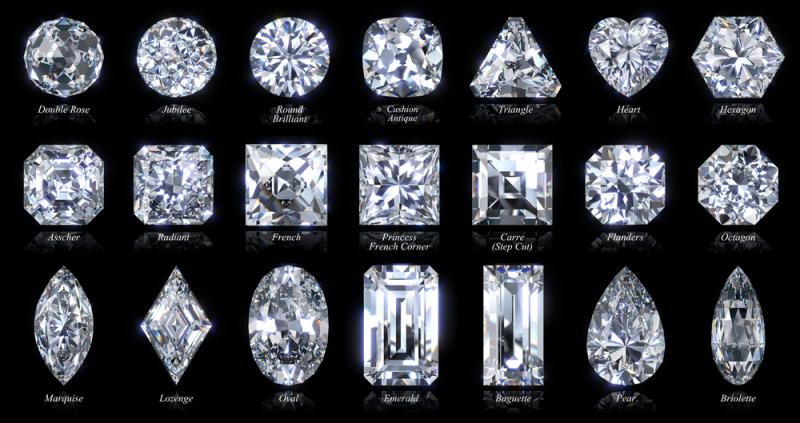
Diamonds and Their Shapes
Let’s begin by exploring the nature of diamonds, their formation process, and the various shapes they can take. Diamonds are a form of carbon known as an allotrope, characterized by the arrangement of carbon atoms in a diamond cubic crystal lattice.
Among naturally occurring substances, diamonds possess the highest heat conductivity and hardness. They are created deep within the Earth, approximately 90 to 125 miles below the surface, where intense heat and pressure transform the carbon reserves.
Due to their exceptional properties, diamonds play a significant role in industrial applications, particularly in cutting and polishing equipment.
The ten most commonly encountered diamond shapes include round, princess, cushion, oval, emerald, pear, marquise, Asscher, radiant, and heart shapes. However, diamonds can be cut into various other shapes as well, such as baguettes, bullets, half-moons, trillion, old mine, rose, and horse head, which are considered more unconventional.
The round brilliant cut stands out as the most popular choice, showcasing fifty-seven precisely aligned facets that enhance its brilliance compared to other cuts. Achieving total internal reflection is crucial in this cut, as it allows light to pass through the diamond, resulting in exceptional sparkle and scintillation.
Having covered the basics of diamonds and identified the current most sought-after shape, let’s now explore the number of facets found in diamonds in general.
How many facets does a diamond have?
The ideal facet count for a diamond is 58. Therefore, round brilliant, cushion, heart, emerald, and oval diamonds all possess 58 facets. However, some shapes may have fewer facets.
Round diamonds with 58 facets are referred to as “full cuts.” Initially, most raw, uncut diamonds are fashioned into single cuts and then additional facets are added to reach the full count.
A diamond is considered not fully cut if it has fewer than 58 facets.
To delve further into the topic, you can learn about diamond facets and their significance by reading our article titled “Diamond Facets: What Are Facets on a Diamond?”
Now, let’s proceed to explore how to avoid the presence of bow ties in oval diamonds!
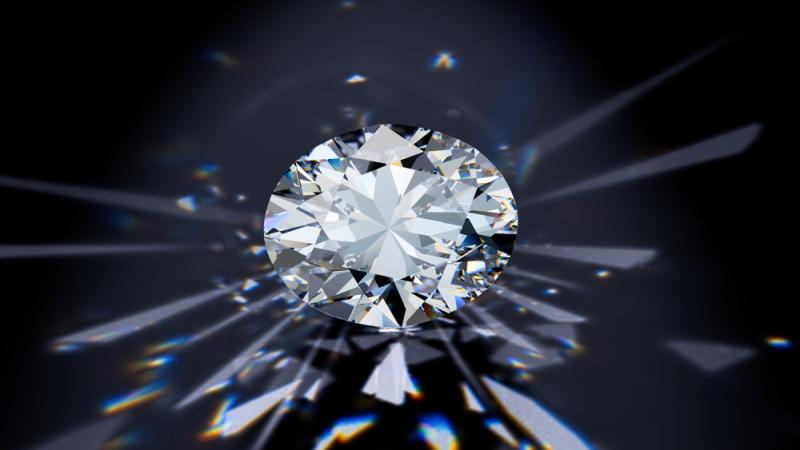
How to Avoid Bow Tie Oval Diamonds?
Before delving further, let’s explore the concept of the bow-tie effect.
Simply put, the bow-tie effect refers to a dark area within a diamond’s facets that becomes visible from a specific angle. Certain core facets within the diamond do not reflect light as effectively as other areas, resulting in a dark region at the center.
This effect often manifests as a black patch in the middle or “belly” of the diamond, forming two triangular shapes reminiscent of a bow tie.
A diamond with a bow-tie is characterized by a dark, horizontal section on its surface, resembling the shape of a man’s bow tie. The intensity of the bow-tie can vary, ranging from very light to very dark.
Fortunately, the most common diamond cuts, such as round and princess, are not prone to the bow-tie effect.
However, it is more commonly observed in fancy cuts like marquise, oval, pear, and occasionally even in heart-shaped diamonds.
The bow-tie effect in oval diamonds is primarily due to the shape itself, as the narrower edges of the oval may not reflect light as effectively as the rest of the diamond, resulting in less light returning to the viewer and creating the undesired bow-tie appearance.
The diamond cutter plays a crucial role in determining the arrangement of facets that will produce optimal light refraction. Various options exist, including different variations of the four main, six main, and eight main patterns, each with several “main pavilion” facets. When viewed from the bottom, a star-like pattern can be observed, with a total of 4, 6, or 8 “legs” in the star.
The likelihood of a bow-tie effect decreases as the number of facets in the central area of the diamond increases.
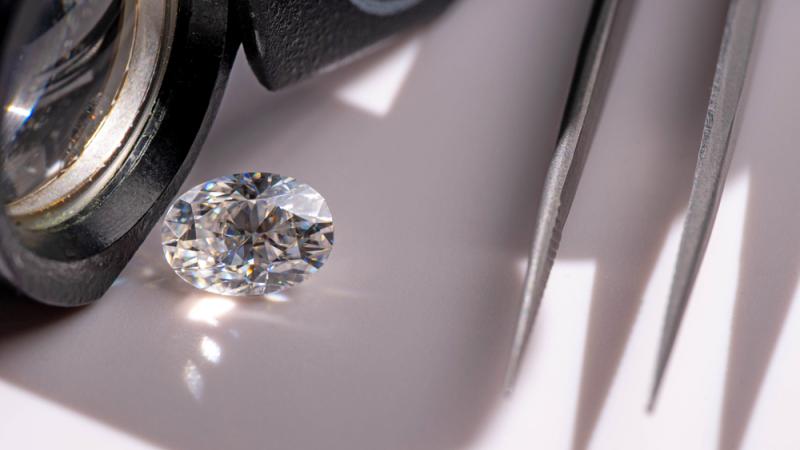
What Causes an Oval Diamond to Have a Bow Tie?
The presence of a diamond bow-tie effect occurs when the length facets of a diamond, which are more extended and steeper than the width facets, result in an uneven distribution of light refraction. This discrepancy in depth and angle between the center and tips of an oval diamond causes light to refract differently.
If a diamond cutter is not meticulous, these deeper center facets can create a dark area known as an oval diamond bow-tie. Skilled diamond cutters, on the other hand, strive to eliminate dark bow-ties and strategically distribute contrast throughout the stone to achieve a uniform appearance.
The absence of bow-ties in brilliant cuts like round, square, or cushion can be attributed to their precisely proportioned shapes, which facilitate even light dispersion throughout the diamond.
Bow-ties tend to be more noticeable in intricate cuts due to imprecise light refraction and reflection. If a diamond has poorly cut edges and mismatched facets, the bow-tie effect becomes more pronounced.
Furthermore, the angle at which you view the diamond plays a role in the visibility of the bow-tie effect. This factor is influenced by how your head obstructs the interaction of light with the stone, rather than solely being determined by the cut itself.
It’s important to note that your head blocking the light creates shadows that reflect within the diamond, contributing to the occurrence of a bow-tie effect when light fails to reflect properly on the stone.
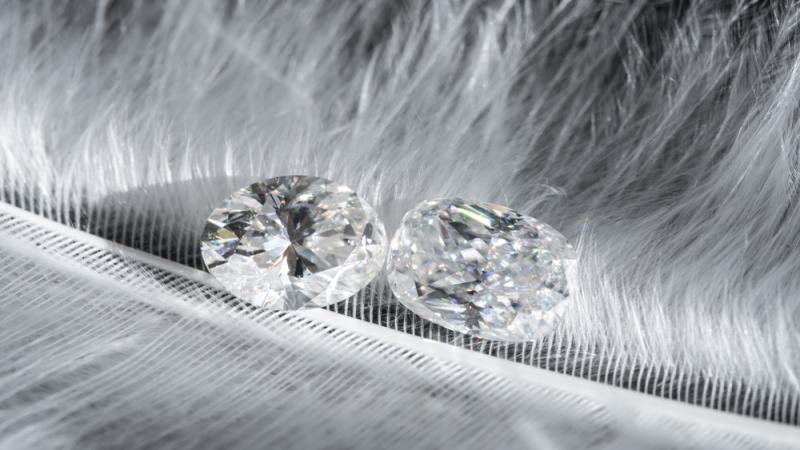
Do Bow Ties Always Look Bad?
Although the bow-tie effect in diamonds is subtle and often adds to their visual appeal, it should not dominate the overall appearance. In fact, many dramatic and elegant cuts intentionally include a mild bow-tie, as it can enhance the diamond’s attractiveness. The presence of a weak bow-tie creates a pleasing contrast between areas of light and shadow, giving the diamond a brighter appearance.
Moreover, the complete absence of a bow-tie may indicate that the diamond has been cut too shallow, resulting in reduced brilliance and sparkle.
However, it is advisable to exercise caution when the bow-tie becomes the dominant feature, obscuring significant portions of the diamond. In such cases, it is best to avoid selecting a diamond where the bow-tie effect overwhelms its beauty.
It is worth noting that not all bow-ties are undesirable. Oval and marquise fancy-cut diamonds commonly exhibit a certain degree of a bow-tie effect. In fact, diamonds lacking any bow-tie can often appear lackluster and uninspiring.
Now, let’s explore whether it is possible to minimize or eliminate the bow-tie effect in diamonds!

How Do You Stop the Bow Tie Effect?
In reality, a subtle bow-tie effect can add character and sensuality to a fancy-shaped diamond. However, if you prefer to minimize or avoid the bow-tie effect, here are a few strategies to consider:
- Pay Attention to Cut Quality: The cut grade of a diamond plays a significant role in the prominence of the bow-tie effect. Look for a diamond with a cut grade of very excellent or above on the GIA’s Cut Grading System, as a well-cut diamond will help reduce the visibility of the bow-tie.
- Opt for North-South Orientation: Avoid setting an oval diamond horizontally (East-West orientation), as this can accentuate the appearance of a prominent bow-tie. Instead, choose a vertical (North-South) orientation, which is less likely to draw attention to the dark areas near the diamond’s core.
- Evaluate Under Different Lighting Conditions: Examine the diamond in person under various lighting conditions to identify any bow-tie effect. Some jewelry stores may have softer or diffused lighting, making it harder to detect the bow-tie until you view the stone in different lighting environments.
- Consider the ASET Test: The ASET (Angular Spectrum Evaluation Tool) test can help identify an oval diamond without a significant bow-tie effect. This test assesses how the stone responds to surrounding light and provides a color-coded image that reveals the angles at which each facet receives light. However, it’s important to note that the ASET test is not used by the GIA for diamond assessment.
- Embrace the Bow-Tie: It’s essential to understand that oval, pear, and marquise cut diamonds often exhibit some degree of a bow-tie effect. Rather than trying to eliminate it entirely, consider embracing it. A slight presence of darkness in the diamond’s core can enhance contrast and give the gem a captivating, three-dimensional appearance.
Keep in mind that once a bow-tie is present in a diamond, it cannot be removed. The key consideration is the degree of visibility, as it may only be noticeable at specific angles or in certain lighting conditions.
When assessing an oval-cut diamond, pay attention to the angles, as they play a role in the prominence of the bow-tie effect. The areas where light misses the eye and creates dark patches or a bow-tie effect should be considered. While size can influence the appearance of a diamond’s bow-tie, removing it entirely is challenging and can impact the overall shape and form of the diamond.
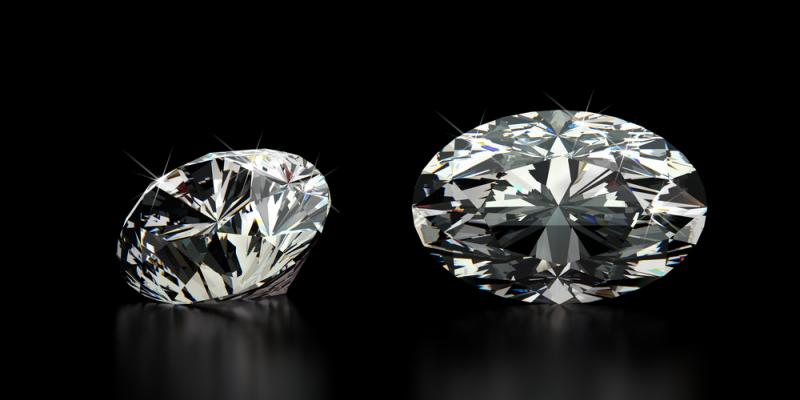
Which Ratio Is Ideal for Oval Diamonds?
There is a general consensus among people that the ideal length to breadth ratio for oval diamonds falls between 1.35 and 1.50. Within this range, diamonds achieve a balanced shape, neither too elongated nor too rounded. As the ratio decreases, the oval shape becomes plumper.
When it comes to setting oval diamonds, one of the most stunning options is the prong setting. This traditional and commonly used style allows ample light to enter the diamond, enhancing its brightness while still showcasing a significant portion of the stone. Prong settings typically feature four or six prongs.
On the other hand, a higher length-to-width ratio in oval diamonds creates a slimmer appearance. This slender shape can make the diamond appear larger than its actual carat weight, offering an advantage.
However, personal preference plays a significant role in the choice of oval shape. Some individuals may prefer marquise-shaped ovals, also known as “movals,” while others may gravitate towards rounder ovals, referred to as “rivals” at their extreme. These outliers can be captivating and add a unique touch to the overall design.

Final Thoughts
We have addressed the important question of how to avoid the bow-tie effect in oval diamonds. The answer is simple:
Diamond cutters continually explore different techniques to minimize the bow tie. For example, cutting an oval diamond wider or deeper can make the bow tie less noticeable, but this may require compromising on the desired ratio or settling for a diamond that appears smaller when viewed from the top.
Throughout this article, we have provided comprehensive information about diamond cuts, their characteristics, the bow-tie effect, its causes, and strategies to avoid it. Additionally, we have offered guidance for purchasing oval-cut diamonds.
Our aim is that this article not only helps you find the answer you were seeking but also provides an enjoyable and informative read.


